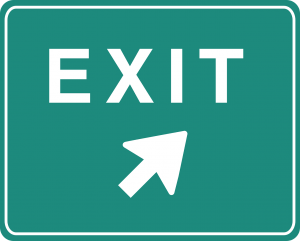by Nancy Owen, PHR

Though you can consider any time period, let’s assume you want to calculate the turnover rate for the month of November. In that case you would:
- Add the number of employees you have at the beginning of November to the number of employees you have at the end of the month and divide by 2. That gives you the average size of your workforce for November.
- Once you have found the average size of your workforce then you would divide the number of separated employees for that month by the average number of your workforce and multiply by 100. That gives you the employee turnover rate percentage for the month of November.
For example: Let’s say that you have 12 employees in your workforce and 2 of those employees left the company last month. You would divide 2 by 12 then multiply by 100. It would look like this: 2/12×100. The result is 16.6 percent.
But what is considered a high turnover rate?
Just last year the national average turnover rate for the manufacturing industry was 12.4%, and turnover rates for all industries were about 13%. Rates in the private sector, according to the Society of Human Resources Management, are much higher, especially in the service industry where the average was 30%. To make it more challenging, turnover rates will most likely go up as more Millennials, who are known to job hop, enter the job market.
A high turnover rate can be very costly to your company. Take the process into consideration: there is the cost of advertisements, the time to interview the candidates, and the costs associated with orientation and training required to get the employee up to speed. On top of that productivity will most likely be down during your new employee’s first 6 months as he/she learns the job. In a nutshell, you are making a sizable investment in that new employee. If you do not retain them, you have actually made a really bad investment and would have to repeat the whole costly process over again. The impact is larger for small companies considering the work load of one employee. That means greater risk and a bigger impact on your bottom line. Some experts estimate the cost of losing one employee can be twice an employee’s annual salary.
So what can you do to eliminate high turnover?
- Start at the beginning. When you interview candidates for the open job, make sure they not only have the best knowledge, skills and abilities to do the job, but that they are a good fit for the company’s culture. An employee who is a good cultural fit will work well within your existing culture and get along well with your other employees, but the employee who fails to fit usually leaves your company to find a work culture that is better suited to them.
- Listen to your employees. Is your culture employee-centric? Many organizations who experience low turnover have employee-centric companies. They ask for input and ideas from their employees and they involve them when looking at new processes and procedures. They have open-door policies and they recognize and reward the contributions the employees make.
- Consider compensation. Pay your employees a fair wage for the work they are performing. Market analysis is available to help you determine how much a particular job is paying in your area.
- Don’t forget benefits. Look at your benefits regularly, even if you do not offer a medical plan there are other benefits available at low or no cost to the employer. If your organization can withstand flexible schedules or work from home programs, for example, that is always a benefit to employees.
- Manage performance. Have a good performance evaluation plan in place for your employees and recognize and reward them when it is warranted.
- Develop employees. Having development plans for employees lets them know you care about their growth and futures. They will be more likely to stay and work toward those future goals if they know what is ahead of them.
- Respect your team. Make sure you are showing your employees respect. Communicate your vision clearly. Hold communication meetings and one-on-one meetings regularly to listen to them and hear their ideas.
In most cases, the company gets plenty of warning signs before an employee starts looking for other employment. It is a good idea to identify and address those signs before you lose a good employee. Decreasing unnecessary turnover will save your organization time and money.
For more information on dealing with employee turnover, hiring help, or any other HR issue, drop us an email at HRHelpline@eastcoastrm.com. We will be happy to help you.
Disclaimer: The information provided on this web site is for informational purposes only and not for the purpose of providing legal advice. Use of and access to this Web site do not create an attorney-client relationship between East Coast Risk Management or our employment law attorney and the user or browser.

